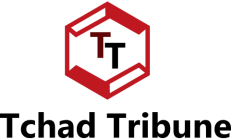Cuddling his 14-week-old daughter, who had received the scheduled childhood vaccines, Mr Aliyu Fawaz Bello, an architect and father of four residing in Abuja, said he always ensures that his children never miss a required vaccine dose.
Mr Bello was at the government-run Family Health Municipal Clinic in Abuja to support his wife to present their daughter to receive her 3rd dose of oral polio vaccine (OPV3), the Pentavalent (Diphtheria, Pertussis, Tetanus, Hepatitis B and Hib) and Pneumococcal conjugate vaccines (PCV).
He said “it is the duty of parents to ensure that their household receives vaccinations so that the nation will continue to have healthy and brighter children.
“A father has to ensure they receive all immunization schedules for children as the vaccines protect children against diseases such as measles, yellow fever, meningitis, polio and vitamin A will help strengthen their eyes.
“Vaccines protect, build immunity, and help in boosting and strengthening the immune system of people who receive them. My workplace has been very supportive as I take permission on days my children are to receive their immunization,” he said.
For Osas Onaghinon, getting her 15 months’ daughter, Esther, to the clinic whenever she is due for vaccination, is one of her top priorities.
“I take her vaccination schedules seriously and note the vaccines she has received and those she is due to receive. To protect the health of our children, many parents need to develop a welcoming attitude towards vaccines and make them compulsory for their children,” she said.
Protection guaranteed
Vaccines are among the greatest scientific innovations and have brought the world closer to ending diseases such as polio.
To underscore the importance of vaccines, the officer in charge, Mrs Obuba Horsefall of Family Health Municipal Clinic, Abuja said the facility provides regular routine immunization for children to protect them from deadly vaccine-preventable diseases such as measles, Yellow fever, meningitis. At the clinic, adults also receive tetanus and COVID-19 vaccination for adults and mothers.
“The one-stop-shop for mothers and babies makes it a win-win situation as they can receive their shots and protects the community at large,” she said.
**Supporting immunization **
WHO marks the World Immunization Week (24–30 April 2022) to reinforce the importance of equitable and expanded access to vaccines, to contribute to a long and healthy life for everyone.
“With the theme of this year’s commemoration – Long life for all, the World/Africa Immunization Week aims to spread the message about the significance of immunization, and how it prevents the onset of various infectious diseases,” said the WHO Country Representative (WR), Dr Walter Kazadi Mulombo.
“The theme reinforces that vaccines make it possible for us to follow our dreams, protect our loved ones and live a long, healthy life”, he said.
WHO Nigeria has continued to work with the government to raise awareness on the value of vaccines and immunization and ensure that Nigeria obtains the necessary guidance and technical support to implement high-quality immunization programmes.
“The immunization programme also helps identify vulnerable children who have never received vaccination doses (zero dose children), and those who have had only partial vaccine doses by health systems and brings them life-saving care. Also, WHO has been supporting the government to facilitate the planning and equitable distribution of COVID-19 vaccines received through the COVAX facility,” WR said.
The ultimate goal of World Immunization Week is for more people – and their communities – to be protected from vaccine-preventable diseases.
Support for Immunization activities in Nigeria through WHO is made possible by funding from the Gavi, the Vaccine Alliance, Bill & Melinda Gates Foundation, Department for International Development (DFID – UK), European Union, Government of Germany through KfW Bank, Global Affairs Canada, United States Agency for International Development (USAID), Rotary International and the World Bank.
Source: World Health Organization


